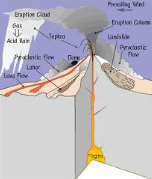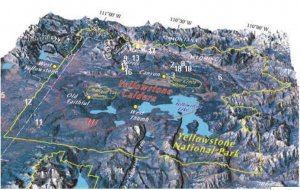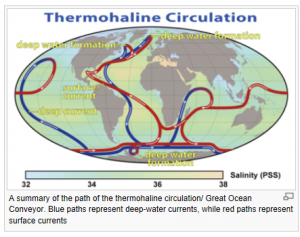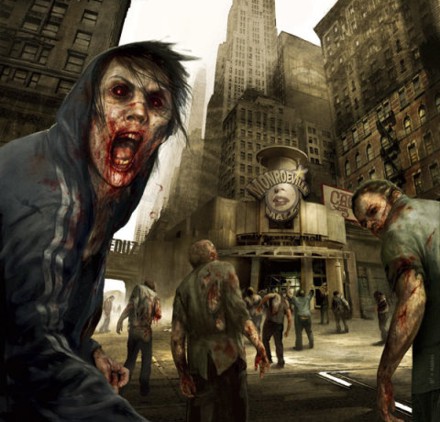Tag Archives: earthquakes
Doomsday 2012 Fact Sheet
 There is widespread and unnecessary fear of doomsday on December 21, 2012. Some people worry about a Maya prophesy of the end of the world, others fear a variety of astronomical threats such as collision with a rogue planet. Opinion polls suggest that one in ten Americans worry about whether they will survive past Dec 21 of this year, and middle-school teachers everywhere report that many of their students are fearful of a coming apocalypse. Following are brief facts that address these doomsday fears.
There is widespread and unnecessary fear of doomsday on December 21, 2012. Some people worry about a Maya prophesy of the end of the world, others fear a variety of astronomical threats such as collision with a rogue planet. Opinion polls suggest that one in ten Americans worry about whether they will survive past Dec 21 of this year, and middle-school teachers everywhere report that many of their students are fearful of a coming apocalypse. Following are brief facts that address these doomsday fears.
Mayan Calendar: The Maya calendar, which is made up different cycles of day counts, does not end this year. Rather, one cycle of 144,000 days (394 years) ends and the next cycle begins.
Mayan Prophecy: The ancient Maya did not predict the end of the world or any disaster in December 2012. Such doomsday predictions are a modern hoax.
Planet Nibiru: Nibiru is probably the minor name of a god found in ancient Mesopotamian writing. There is no planet named Nibiru, and the fictional books by economist Zecharia Sitchin about a civilization on this planet are a hoax.
Rogue Planet Headed for Earth. For the past decade there have been reports of a rogue object (Planet X, or Nibiru, or Hercubolus, or even Comet Elenin) that will collide with Earth in December 2012. These claims are not true. If such a threatening world existed, it would be one of the brightest objects in the sky, and astronomers would have been tracking it for years. If it existed, its gravity would be distorting the orbits of planets, especially Mars and Earth. Astronomers know that it does not exist.
Planet Alignments: There is no alignment of planets in Dec 2012. There is an approximate lining up of the Earth and Sun and the center of our Galaxy in late December, but this happens every year. In any case, planet alignments have no effect on the Earth.
Pole Shift: There is nothing strange this year about either the magnetic poles or the rotational poles of the Earth. The magnetic polarity changes every million years or so, but that is not happening now, and it probably takes thousands of years when it does happen. A sudden change in the rotational axis has never happened and is not possible. If there were any change in the Earth’s rotation, it would be instantly apparent by failure of our GPS systems.
Increasing Disasters. Our planet is behaving normally in 2012, although we see more and more news stories about natural disasters. There has been no increase in earthquakes or volcanic eruptions. There has been an increase in extreme weather, including both droughts and floods, which are partly attributable to global warming, but this has nothing to do with a 2012 doomsday.
Solar Outbursts: The Sun’s ongoing 11-year activity cycle is expected to peak in 2013, not 2012. Solar outbursts (flares and CMEs) can damage orbiting satellites but will not hurt us on the surface. The strength of the 2013 solar maximum is predicted to be lower than average, not higher.
Bunker Conspiracy: Accusations of a massive government cover-up are nonsense. No government could hide an incoming planet or silence hundreds of thousands of scientists. Rumors that huge bunkers have been built in the U.S. or elsewhere to shelter the elite are lies. Apparently a few people are building private shelters, but their fear of 2012 is misplaced and they are wasting their money.
Scaring Children: The group most vulnerable to doomsday claims is children. Teachers report that many of their students are frightened and some are even considering suicide. This is the most tragic consequence of the 2012 hoax.
The End of the World: The idea of the sudden end of the world by any cause is absurd. The Earth has been here for more than 4 billion years, and it will be several more billion years before the gradual brightening of the Sun makes our planet unlivable. Meanwhile there is no known astronomical or geological threat that could destroy the Earth.
Cosmophobia: Many young people write to me that they are scared of astronomy. When they read about some new discovery, the first thing they think is that it might hurt them, even if it is happening in a distant galaxy. There is no reason for such fears, which I call cosmophobia (fear of the universe). This rash of concern seems to be the result of too many conspiracy theories and sensational stories featured on the Internet and irresponsible news outlets. Astronomical objects are so distant that they cannot threaten the Earth. Please don’t be afraid of the Sun or the planets or comets or asteroids. The universe is not your enemy.
DOOMSDAY 2012 – NATURAL DISASTERS COULD WIPE OUT YOUR ZOMBIE WORRIES
Floods, earthquakes, and volcanic eruptions. These are just a few of the natural disasters that may befall our planet between now and December 21st, 2012. As we speak, the summer solstice is upon us, but it’s the winter solstice that we should be worrying about.
Flooding. There are several different scenarios in which massive floods may overcome our planet. One is oceanic rise. If the oceans rise, the coastal areas of the world will recede, and millions of people living in these areas will either die or have to move further inland. Global warming is currently being blamed for the Greenland ice sheets and polar cap melt off that has been going on for years. I think the majority of people are skeptical of this diagnosis, or just don’t know what to think, as scientists seem to fall on both sides of this debate. What no one can dispute is that this is happening.

If solar flare/sunspot activity on 12/21/2012 should be great enough to gain entrance to our atmosphere on this day, it could accelerate the ice melt and the oceans will rise. If the temperature of the earth’s surface rises just a few degrees, this would also happen. How quickly, obviously no one knows. One thing rapid or even gradual ice melts will do is disrupt the thermohaline circulation of water in the Atlantic Ocean, an ocean-based system of heat delivery sometimes referred to as the North Atlantic thermal conveyor belt.
The northeastern States, eastern Canada and, primarily, Europe enjoy warmer climates than they otherwise would because of the thermohaline circulation. This vast ocean conveyor sweeps warm, salty water from tropical latitudes north along the surface. After shedding heat to the atmosphere, the chilled brine becomes denser and sinks. Thousands of feet beneath the surface it flows back toward the equator, completing the loop.
But as the climate warms disproportionately at the poles, the gears of the system begin to wobble. Freshwater runoff from Greenland’s ice cap and from melting glaciers across the Arctic, combined with increased precipitation, will form a thick, buoyant cap over the North Atlantic. Already, this gigantic vortex may be sputtering. The surface of the North Atlantic is becoming noticeably less salty, and thus less driven to sink.
 Thermohaline circulation shut down as recently as 8200 years ago, and some scientists contend that the Little Ice Age of 1300 to 1850 was due to a hiccup in the system. The chance of another collapse is hotly debated, in scientific circles, and may throw us into another Little Ice Age again.
Thermohaline circulation shut down as recently as 8200 years ago, and some scientists contend that the Little Ice Age of 1300 to 1850 was due to a hiccup in the system. The chance of another collapse is hotly debated, in scientific circles, and may throw us into another Little Ice Age again.
Earthquakes are a distinct possibility, and tectonic shift may occur. Tectonic shift and rise can be a direct result of earthquakes, as well as the weight and motion of melting water, among other things. It may well force the earth’s mantle to rise up and reform our planet.
Volcanic eruptions are a potentially catastrophic event that could be in store for us. The caldera at Yellowstone National Park, the World’s largest volcano, is said by scientists to be overdue for an eruption. This volcano is sometimes referred to as a Super volcano. There are over 3000 recorded earthquakes at Yellowstone National Park each year, and any sort of cataclysmic event on a worldwide scale may be the spark that  forces the caldera to erupt. That eruption, along with any others that may happen on that fateful day, 12/20/2012, would put enough volcanic ash into the atmosphere, as to blot out the sun for years, perhaps even decades. And then there are all the different types of gasses that will also be in the air, and oxygen purity levels will drop dramatically. Without Photosynthesis, a process whereby plants capture the suns energy to split off water’s hydrogen from oxygen. Hydrogen is combined with carbon dioxide to form glucose and release oxygen. If the sun is blotted out and plants can’t grow and capture carbon dioxide, while releasing oxygen, we may lose our ability to breath, among other things. This will also have a devastating effect on the global food chain. In my opinion, this will be the start of a fatal global downward spiral, from which there will be no return.
forces the caldera to erupt. That eruption, along with any others that may happen on that fateful day, 12/20/2012, would put enough volcanic ash into the atmosphere, as to blot out the sun for years, perhaps even decades. And then there are all the different types of gasses that will also be in the air, and oxygen purity levels will drop dramatically. Without Photosynthesis, a process whereby plants capture the suns energy to split off water’s hydrogen from oxygen. Hydrogen is combined with carbon dioxide to form glucose and release oxygen. If the sun is blotted out and plants can’t grow and capture carbon dioxide, while releasing oxygen, we may lose our ability to breath, among other things. This will also have a devastating effect on the global food chain. In my opinion, this will be the start of a fatal global downward spiral, from which there will be no return.
Last but not least. Again, in my opinion, the most probable occurrence will be an eruption of the volcano at Cumbre Vieja. Cumbre Vieja is an active volcanic ridge on the volcanic ocean island of Isla de La Palma in the Canary Islands, Spain. History has recorded volcanic eruptions of the Cumbre Vieja in 1470, 1585, 1646, 1677,m 1712, 1949, and 1971.
 During the 1949 eruption, three vents—Duraznero, San Juan and Hoyo Negro—opened and expelled massive amounts of lava. Also during the eruption two earthquakes happened centered near Jedey. Following the earthquakes a fracture appeared, approximately two miles long, about 1/10 of the exposed length of the Cumbre Vieja. Parts of the western flank of the Cumbre Vieja ridge moved about 1 mile sideways and 2 miles downwards towards the Atlantic Ocean. Scientists have hypothesized that an eruption or even an earthquake would send the western flank of the island sliding into the Atlantic Ocean, creating a Mega Tsunami of biblical proportions. Computer models indicate the resulting gravitational landslide will enter the Atlantic Ocean and create the so called Mega Tsunami, with the initial wave estimated at some 200 feet in height, and a peak to peak height of 1 mile. Estimated speed of the wave is 600 mph. It will reach the African coast in 1 hour, southern england in about 3 to 4 hours, and the eastern seaboard of the United States in about 6 hours. The initial wave will have subsided into a succession of smaller ones each about 100 to 200 feet in height, and may swell to 400 to 600 feet high at a distance of 1 to 2 miles apart, while retaining the original speed. Computer models indicate differing inland inundation measurements, between 15 to 30 miles or more according to the volume of water.
During the 1949 eruption, three vents—Duraznero, San Juan and Hoyo Negro—opened and expelled massive amounts of lava. Also during the eruption two earthquakes happened centered near Jedey. Following the earthquakes a fracture appeared, approximately two miles long, about 1/10 of the exposed length of the Cumbre Vieja. Parts of the western flank of the Cumbre Vieja ridge moved about 1 mile sideways and 2 miles downwards towards the Atlantic Ocean. Scientists have hypothesized that an eruption or even an earthquake would send the western flank of the island sliding into the Atlantic Ocean, creating a Mega Tsunami of biblical proportions. Computer models indicate the resulting gravitational landslide will enter the Atlantic Ocean and create the so called Mega Tsunami, with the initial wave estimated at some 200 feet in height, and a peak to peak height of 1 mile. Estimated speed of the wave is 600 mph. It will reach the African coast in 1 hour, southern england in about 3 to 4 hours, and the eastern seaboard of the United States in about 6 hours. The initial wave will have subsided into a succession of smaller ones each about 100 to 200 feet in height, and may swell to 400 to 600 feet high at a distance of 1 to 2 miles apart, while retaining the original speed. Computer models indicate differing inland inundation measurements, between 15 to 30 miles or more according to the volume of water.
This would greatly damage or destroy cities along the entire North American eastern seaboard, and tens of millions would be killed from Maine to Florida, and everything In between.
So there you have it. Not a pretty picture is it.
‘Zombie apocalypse’ trending as bad news spreads quickly
 The term “zombie apocalypse” has been lighting up the internet all week and has been among the top Google trends Friday morning.
The term “zombie apocalypse” has been lighting up the internet all week and has been among the top Google trends Friday morning.
On the Web’s Urban Dictionary, here’s definition No. 4 of zombie apocalypse: “The End of the World, when people who have died rise again in rotten corpses searching for blood and brains to strengthen them.”
While we’re certain the dead are not rising, the past week has seen some of the most disturbing instances of human behavior imaginable.
A man in Miami happens upon a homeless man on the sidewalk and chews off 75% of his face in an 18-minute attack. The attacker’s mother later says her son is not a zombie as portrayed in the media.
Authorities in Canada have launched a massive manhunt for a suspect after a severed hand was sent to Canada’s Liberal Party, a foot to the Conservatives and a torso was stuffed in a suitcase and tossed in the trash of the Montreal apartment building where he lived.
A Maryland man admits to killing his housemate, cutting him up, then eating his heart and part of his brain.
A New Jersey man rips his torso open and throws bits of his intestines at police,according to the Bergen Record.
There have been other equally grisly crimes, but there’s no need to dwell on them.
Fact is, horrible crimes happen all the time.
“This is all nothing new,” said Scott Talan, professor of public communication at American University, with a long work history in public relations and the media.
Bad news attracts attention, he said, and when it happens in bunches, people like to attach a name to it, hence, “zombie apocalypse.”
People also like to see others in bigger trouble than they have themselves, Talan said.
“No matter how your life’s going, someone’s got it worse,” he said.
We like to think, “I’m better off than these people,” he said.
And that’s nothing new, Talan said, pointing out that ancient Roman philosophers used to lament that citizens felt little for the gladiators and what happened in their gruesome contests.
But he said while these stories catch fire quickly in our wired world, they flame out quickly, too.
Unless there’s another gruesome crime today, expect the zombie apocalypse to be done by next week, he said.
Even if that’s the case, there may be some good that can come of the attention zombie apocalypse has drawn on the Web.
A year ago, when zombie movies were the rage, the Centers for Disease Control and Prevention said if it could convince the public to prepare for the zombie apocalypse, maybe they’d be better prepared for disasters more likely to affect their lives, like earthquakes, hurricanes and tornadoes, or a major pandemic.
Or maybe the Mayan apocalypse. Talan points out that it isn’t real, it’s just a name like zombie apocalypse.
But then again, that isn’t supposed to happen until December. There’s still time for that go viral again.